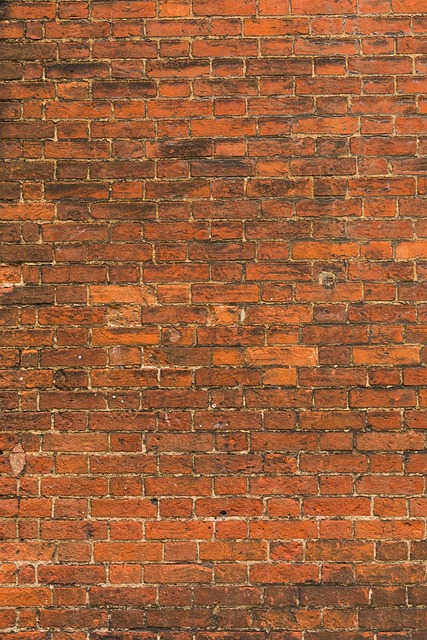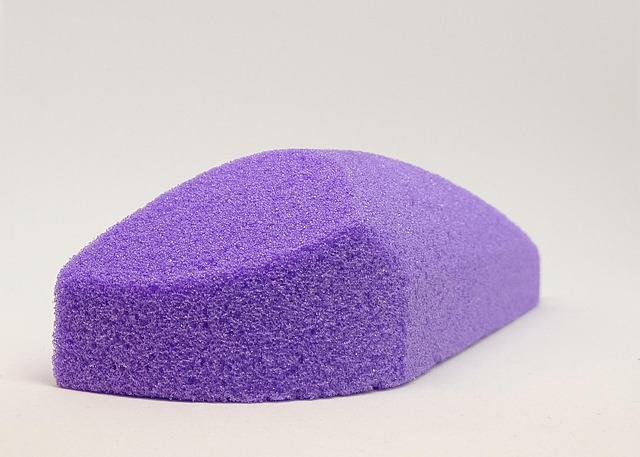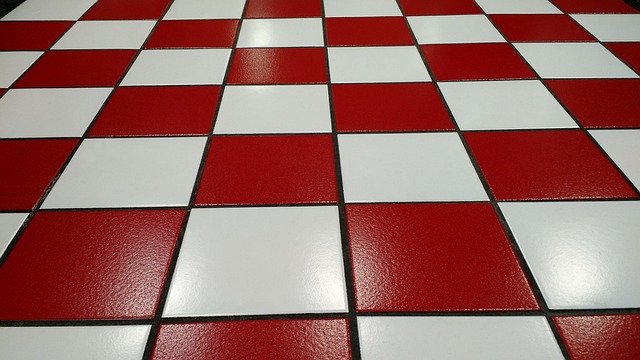Homeowners face grout stain removal challenges, especially with tiled floors and kitchens. Understanding stain causes—liquids, food particles, soap scum, and mineral deposits—is crucial for prevention. Regular cleaning and prompt action are key. Specialized tools and products, like grout cleaners, baking soda, vinegar, and sealing agents, are effective for same-day removal. Natural solutions offer eco-friendly options, while chemical solutions tackle persistent stains. Regular cleaning routines and quick spill cleanup prevent future issues. For severe cases, professional services restore grout lines to their original condition.
Tired of unsightly grout stains ruining your tile’s aesthetic appeal? Discover same-day solutions to effortlessly remove even the toughest grout discoloration. This comprehensive guide unravels the causes behind grout stains, equipping you with the knowledge to tackle them head-on. From natural remedies to advanced chemical options, we’ve got you covered. Learn effective cleaning techniques, prevention tips, and when to seek professional assistance for those stubborn stains. Take control of your tile’s cleanliness – remove stains from grout lines like a pro!
Understanding Grout Stain Causes

Grout stain removal is a common concern for homeowners, especially those with tiled floors or kitchens. Understanding how stains form in the first place is key to effective stain removal. Grout lines, due to their intricate nature and close proximity to various surfaces, are particularly susceptible to staining. Several factors contribute to grout stain causes, including spills and splashes of liquid substances like coffee, tea, wine, or fruit juices. These liquids can quickly penetrate the porous grout material if not wiped up immediately.
Moreover, food particles, soap scum, and even mineral deposits from hard water can adhere to the grout lines, leading to discoloration over time. Everyday wear and tear, such as tracking in dirt or moisture from shoes or rain, can also contribute to staining. Once stains form, they can become embedded deep within the grout, making manual cleaning challenging. Prompt action is crucial; regular cleaning and maintenance can help prevent or minimize the impact of these stain causes.
Tools and Materials for Stain Removal

Removing stains from grout lines requires specific tools and materials for optimal results. Start with a good quality grout cleaner or stain remover, which can be either in powder or liquid form. These products are designed to penetrate and lift stubborn stains without damaging the grout or surrounding tile. Always follow the manufacturer’s instructions for proper dilution and application.
In addition to the cleaner, you’ll need several tools: a sponge or soft brush for applying the cleaner, a plastic scraper or squeegee for scrubbing away dirt and dislodged stains, and a clean microfiber cloth for rinsing and drying. Using protective gloves is also recommended to avoid skin irritation from chemicals. For more stubborn stains, a grout stone or wire brush can be used, but proceed with caution to prevent scratching the tile surface.
Step-by-Step Guide to Same-Day Grout Cleaning

Removing stains from grout lines is a quick and effective way to refresh your tiled spaces. Here’s a step-by-step guide for same-day grout cleaning:
1. Identify and Prepare: Start by identifying the stained grout areas. Gather your tools, including a grout brush, baking soda, vinegar, water, and a clean cloth or sponge. Make sure the surface is cool to the touch before beginning.
2. Scrub and Clean: Apply a mixture of baking soda and water to the stained grout lines. Use the grout brush to scrub gently but thoroughly, working in small sections at a time. This step helps to loosen any built-up dirt or grime. Next, rinse the area with vinegar mixed with water to neutralise any remaining residue from the baking soda. Wipe dry with your clean cloth or sponge.
Effective Natural Cleaning Solutions

When it comes to same-day grout stain removal, natural cleaning solutions offer an effective and eco-friendly approach. Ingredients like baking soda and vinegar are powerful yet gentle on tile and grout surfaces. For instance, creating a paste from baking soda and white vinegar can tackle hard-to-remove stains caused by ink, coffee, or even mold. This natural cleaner not only whitens the grout but also kills bacteria, ensuring a fresh and clean look.
Another common kitchen ingredient, lemon juice, is an excellent bleaching agent that can lighten discolored grout lines. Applying diluted lemon juice with water directly to the stained area and letting it sit for some time before scrubbing gently will help remove yellowish or brownish stains. These natural methods are not only cost-effective but also safe for use around children and pets, making them ideal choices for quick grout stain removal without harsh chemicals.
Chemical Options for Severe Stains

When it comes to tackling severe grout stain removal, chemical solutions can be a powerful tool. For stubborn marks that refuse to budge with regular cleaning methods, there are specialized products designed to penetrate and lift stains from the grout lines. These chemicals often contain strong yet safe ingredients that effectively break down organic compounds and mineral deposits responsible for discolouration.
The process typically involves applying the chemical solution directly to the stained grout using a clean cloth or brush. Following the manufacturer’s instructions, these solutions can be left on for a set period, allowing them to penetrate deeply before rinsing away the stain. This method is particularly useful for removing tough stains from kitchen and bathroom grout lines, ensuring your spaces look fresh and clean once again.
Preventing Future Stains

After successfully removing grout stains, preventing future occurrences is key. Regular cleaning and maintenance can go a long way in keeping your grout lines stain-free. Start by sweeping or vacuuming floors daily to remove loose dirt and debris that could lead to staining. Use a mild detergent and warm water to mop the floors weekly, focusing on high-traffic areas. This simple routine will help catch potential stains early on.
Additionally, sealing the grout after cleaning can provide an extra layer of protection. Sealing products create a barrier, repelling liquid spills and preventing dirt from setting in. Remember, consistent care and prompt action when dealing with spills are essential to maintaining the integrity of your grout lines and avoiding future stain removal efforts.
Tips for Maintaining Grout Lines

Keeping grout lines clean and stain-free is an essential aspect of maintaining your tiled spaces. Regular cleaning is key; use a soft-bristled brush or sponge to gently scrub away dirt and grime, focusing on the lines where debris tends to accumulate. This simple step can significantly prevent stains from setting in.
For more stubborn stains, consider using natural cleaning solutions like baking soda and vinegar or commercial grout cleaners. Applying these products directly to the stained areas and allowing them to sit for a few minutes before scrubbing will help dissolve and remove deep-seated grime. Regular maintenance and prompt stain removal will keep your grout lines looking fresh and new, ensuring that your tiled surfaces remain vibrant and pristine.
Common Mistakes to Avoid During Cleaning

When tackling same-day grout stain removal, it’s essential to be mindful of common mistakes that can hinder your efforts. One frequent error is using abrasive cleaning tools or harsh chemicals, which can damage the grout and surrounding tiles. Always opt for soft-bristled brushes and gentle, pH-neutral cleaners designed specifically for grout. Abrasive materials can scratch the grout, making stain removal more challenging in the long run.
Another mistake to avoid is skipping pre-soaking the stained area. Grout stains often require time to loosen, so allow your cleaning solution to saturate the affected lines for several minutes before scrubbing. Hasty cleaning may lead to incomplete stain extraction, leaving behind unsightly residue. Remember, patience is key when it comes to effective grout stain removal and achieving that like-new look for your floors or walls.
When to Consider Professional Help

If stains have become a persistent issue in your grout lines, despite your best efforts to clean them, it might be time to consider professional help. Grout stain removal can be particularly challenging due to its porous nature, which allows for easy absorption of dirt, grime, and other substances. Over-the-counter cleaners may not be effective enough against deeply ingrained stains, especially in high-traffic areas or spaces with poor ventilation.
Professional grout cleaning services employ specialized equipment and eco-friendly solutions that can penetrate and lift stains without damaging the grout or tile surface. They have the expertise and experience to tackle tough cases, ensuring your grout lines look as good as new. Hiring professionals is especially recommended for severe stain problems, large areas requiring treatment, or when you’re looking for a long-lasting solution.
